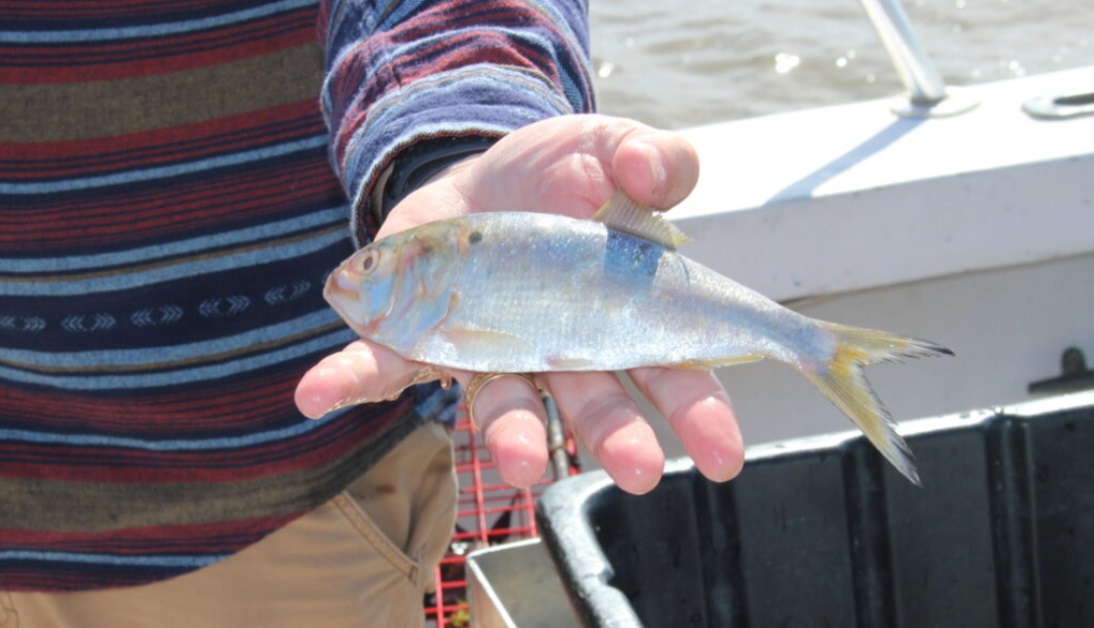Following legislation this past session that required the Virginia Institute of Marine Science to determine how long a study on the Atlantic menhaden population in the Chesapeake Bay would take and how much it would cost, the results are in: at least three years and $2.6 million, if everything were done simultaneously.
Recreational anglers who want to limit Omega Protein – the lone reduction fishery that catches the nutrient-rich menhaden for fishmeal and oil – have called for science to show that the company’s hauls are hurting the striped bass population that feeds on menhaden.
This story was reported and written by The Virginia Mercury
The company, at the same time, said their Reedville-based operations provide jobs and there’s no science to show they are hurting menhaden numbers and the greater ecosystem.
The study is the closest step toward information that both sides have sought during the debate on how restrictive Chesapeake Bay menhaden fishing regulations should be.
“For several years, environmentalists, conservation groups, and recreational anglers have expressed concern to elected officials, policy makers, and fisheries scientists about the health of Chesapeake Bay, and in particular, the impacts of Atlantic menhaden commercial fishing on the bay ecosystem,” the study reads. “In response to these concerns, the Virginia General Assembly passed legislation during the 2023 session that directs the Virginia Institute of Marine Science (VIMS) to develop a plan for studying Atlantic menhaden in the waters of the Commonwealth.”
The study will examine three different components: the ecology; the fishery; and economic impact. The framework for the study was completed after a day-and-a-half long workshop with scientists and representatives from environmental, recreational fishing and fishery groups.
The ecology component comprises the largest part of the study’s cost, with about $2.1 million designated to estimate how many menhaden are in the Bay; this will be accomplished by partnering with the Omega fishery to charter spotter planes or relying on ships’ echosounder technologies. This ecology component would also examine movement rates of menhaden between the Bay and the Atlantic Coast by tagging the fish, and reviewing the impacts on species that feed on menhaden by, in part, analyzing the stomachs of fish who feed on menhaden.
The fishery component would cost about $200,000 and would review the frequency and location of fishery catches and any possible shifts in menhaden habitat. That catch data could then be coupled with results from the ecology section of the study to determine the localized depletion, or impacts of menhaden specifically within the Bay. Another aspect of the fishery component would look at recreational catches of striped bass, cobia, blue fish and other species that forage on menhaden to understand the viability of recreational fishing and its role as an economic driver in the state.
The economic impact component would cost about $300,000 to examine the regulatory impacts of menhaden regulations on the fishery, which would be based on socioeconomic data from the menhaden fishery. By using the ecology data and economic impact information VIMS could then also quantify the impacts of harvest policies – and possibly put a moratorium on menhaden fishing in the Bay.
“I don’t think it’s anything outside what the General Assembly can do,” said Mark W. Luckenbach, associate dean of research & advisory service at VIMS, during a Virginia Marine Resources Commission meeting Tuesday while discussing potential legislation to fund the study.
Steve Atkinson, president of Virginia Saltwater Sportfishing Association, has previously requested a moratorium on Omega Protein’s fishing operations in the Bay until the science is gathered. He is reiterating his calls.
“Obviously, we support the study as the concerns about the ecosystem of the Bay continue to grow,” Atkinson stated via email. “Since the study will take three years, we believe the menhaden reduction fishery should not be fishing in the Bay until science can show that it is not causing harm.“
Omega Protein, meanwhile, has opposed removing its fishing operations from the Bay because it provides a safety net that allows for catches when conditions may be unsafe out in the ocean. If the study is advanced, the science needs to be done correctly and the tagging aspect is paramount to establish baseline findings, said Ben Landry, spokesperson for Omega Protein.
“If you’re going to commit and do the science, do the science,” said Landry.
Last year, the state and the fishery entered into a memo of understanding that Omega would not fish in areas around the Chesapeake Bay Bridge Tunnel, on weekends and around holidays, after net spills resulted in thousands of fish washing ashore in Northampton County. This year, recreational fishers sought to limit how deep nets could be dropped in the Bay, but the commission voted to deny the petition on Tuesday. Another petition to regulate pollutants from Omega Protein’s vessels is still pending.
A lawsuit against VMRC from Maryland recreational fishers is also advancing after a judge dismissed one claim alleging the commission increased the amount of menhaden Omega Protein could catch along Virginia’s coast outside of when it was allowed to, but said a claim that the regulation wasn’t passed following Virginia’s requirements could continue.


